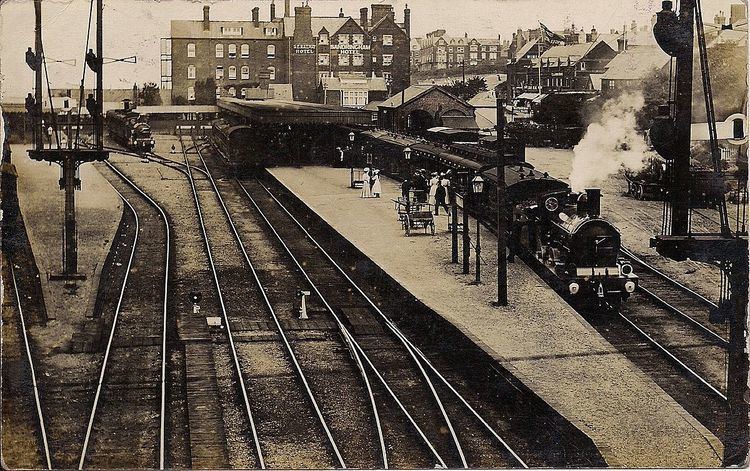3 October 1862 Opened | Grid reference TF671407 Platforms in use 4 | |
 | ||
Post-grouping London and North Eastern RailwayEastern Region of British Railways Address Hunstanton PE36 5EH, United Kingdom Similar Heacham railway station, Snettisham railway station, Dersingham railway station, Docking railway station, Foulsham railway station | ||
Hunstanton was a railway station which served the seaside town of Hunstanton in Norfolk, England. Opened in 1862, the station was the northern terminus of the King's Lynn to Hunstanton line immortalised by John Betjeman in the British Transport Film John Betjeman Goes By Train. The station closed with the line in 1969.
Contents
History
The building of the line to Hunstanton coincided with the rising popularity of North-West Norfolk as a destination for holidaymakers who were arriving in large numbers. Hunstanton itself had been promoted as a seaside resort by Henry Styleman Le Strange (1815–1862), lord of the manor and principal landowner, who gifted land and investment towards the construction of the line. The station was equipped with two long island platforms which could take excursion trains with up to a thousand people aboard, and its seafront location meant that passengers were discharged directly on to the promenade and pier. Long-stay holidaymakers came and left on Saturdays, whilst day-trippers generally came on Sundays in a constant stream of trains at ten-minute intervals. Many stayed at the towering Sandringham Hotel which was conveniently situated at the end of the platforms.
The single-track line into Hunstanton ran almost straight into the station, with beach huts and bungalows on the left and rolling hills to the right. Nearer the seafront the line crossed South Beach Road on the level, before entering the station whose twin island platforms diverged outwards in a roughly triangular arrangement, covered by Great Eastern flat-topped canopies. As well as its four main terminal roads, there were five goods sidings to the east of the platforms which also served as carriage sidings at the height of the Summer season; the sidings converged into a single headshunt which led southwards to Hunstanton Gas Works. In addition, a long siding on the eastern side of the station served cattle docks and an end-loading bay.
Having reached its peak in the mid-1950s, passenger numbers began to decline. Most through services from Liverpool Street station were withdrawn from 1959, leaving Hunstanton with mainly a DMU service to and from King's Lynn. By 1966, services to London had been reduced to one working on weekdays, together with two up and one down on Summer Saturdays. Although the line did not figure in the Beeching Report the line became uneconomic and accordingly efforts were made by British Rail to reduce the losses made by the line. This led to the implementation of the "basic railway" concept whereby stations became unstaffed, signal boxes closed and from 2 March 1967 the line was singled. At Hunstanton, the removal of most of the sidings and stabling facilities meant that through-locomotive excursion trains could no longer be run. As fewer and fewer passengers were using the line, British Rail announced that the line was losing £40,000 per year and would close from Monday 5 May 1969. The last train ran at 9.05pm on Saturday 3 May from King's Lynn, and was packed with around 250 passengers, a similar number waiting at Hunstanton to mark the occasion.
Present day
The site of the station is now a large car and coach park, leaving the former coal shed as the only remaining trace of the railway. This was converted into an art gallery with help from West Norfolk Council, opening its doors for the first time in May 2008. The first exhibition celebrated the King's Lynn to Hunstanton railway line with a display of memorabilia and photographs. The Sandringham Hotel, commandereed by the War Office during the Second World War, was purchased by Hunstanton Urban District Council in 1950 for use as offices; it was demolished in April 1967.
The "Hunstanton Masterplan", a report commissioned by West Norfolk Council to examine the options for regenerating the town, was published in September 2008. Prepared by Building Design Partnership, it considered the possibility of reopening the line from King's Lynn, but ultimately rejected the idea on the basis that (1) some trackbed has been lost to residential development, (2) the costs of construction would be substantial, and (3) there was no guarantee that the line would be financially viable. The study recommended instead the improvement of bus services between the towns.
